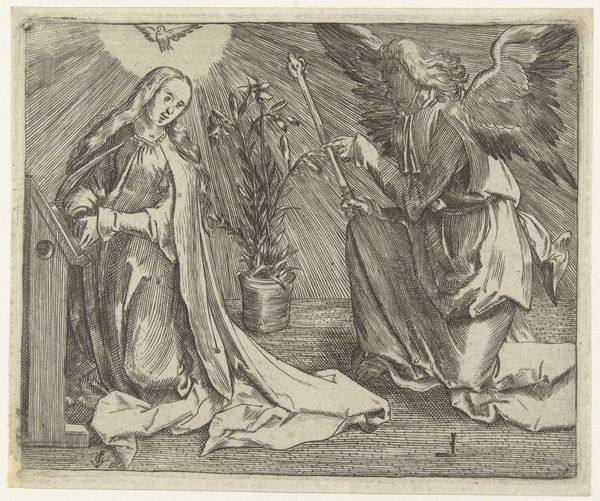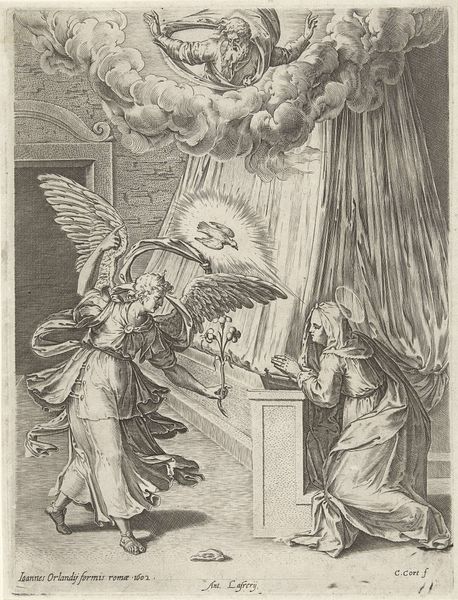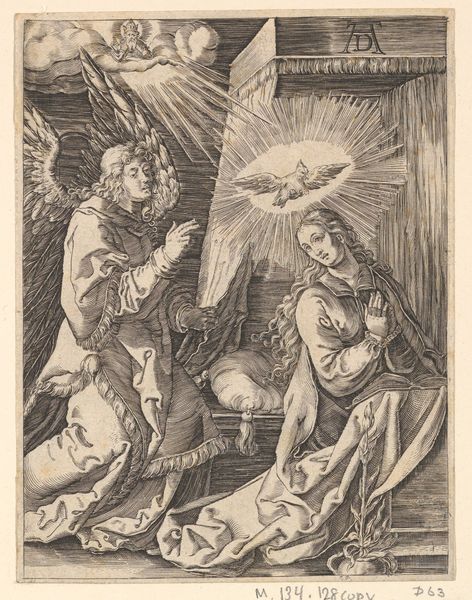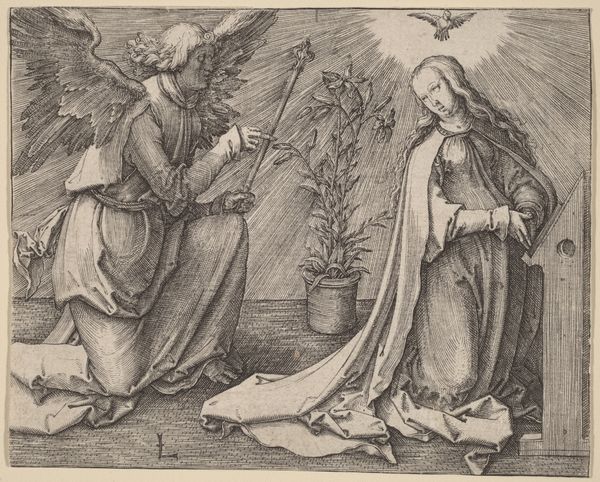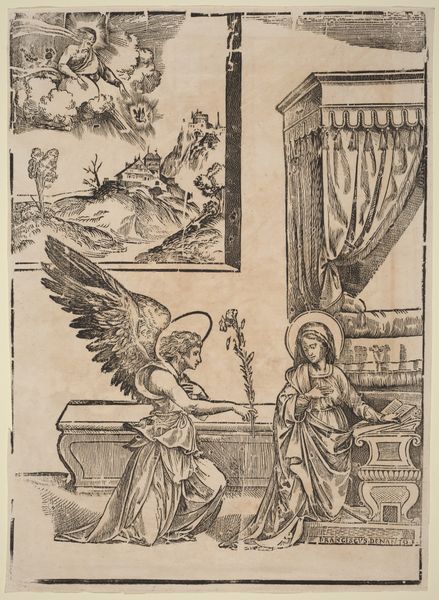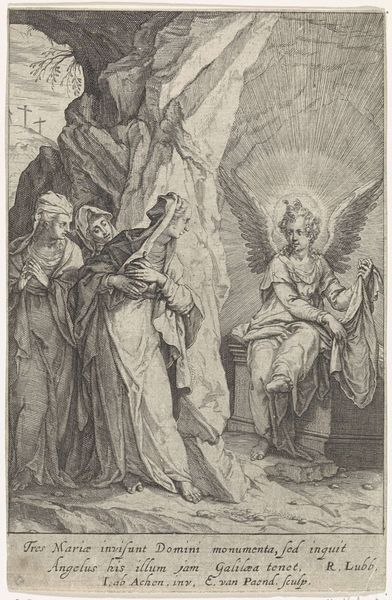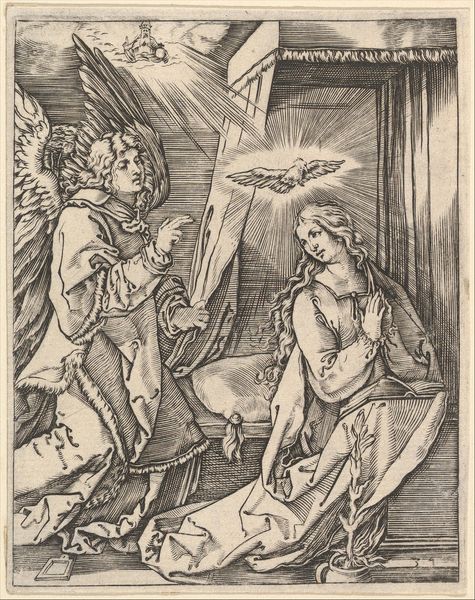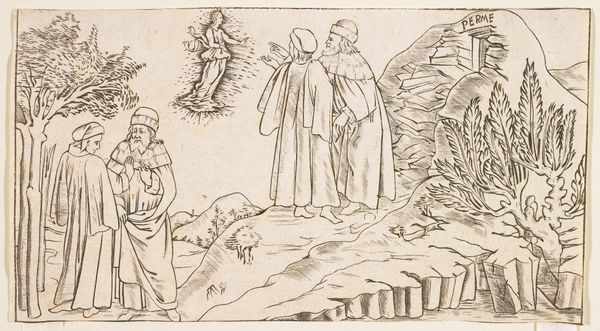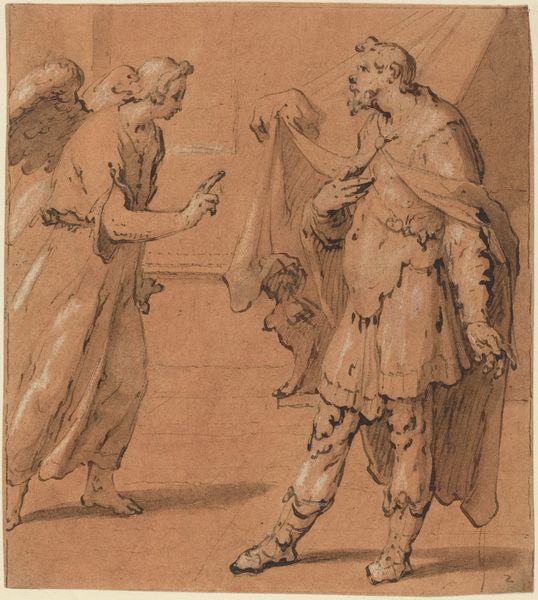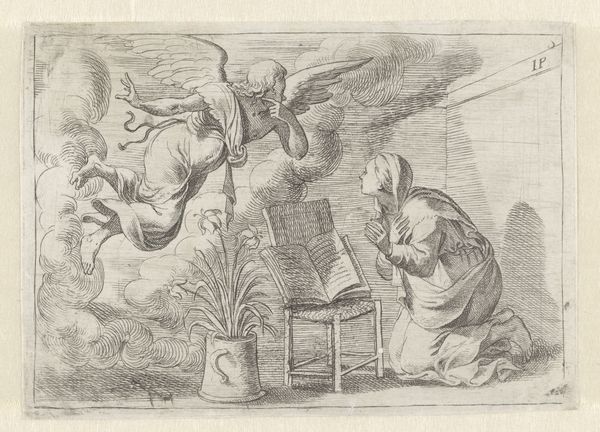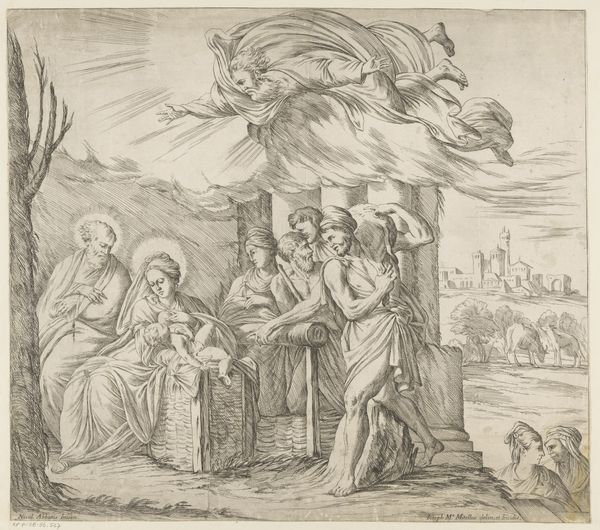
drawing, paper, ink
#
drawing
#
narrative-art
#
baroque
#
figuration
#
paper
#
ink
#
14_17th-century
#
history-painting
Copyright: Public Domain
Curator: What strikes me first about this drawing is the light – the radiating ink lines make it feel like a moment of divine eruption. Editor: Absolutely. This is "Saint Francis Receiving the Stigmata", an early work by Pieter de Jode I, a Flemish printmaker and draughtsman, created sometime in the 17th century. It’s rendered in ink on paper, a delicate yet powerful depiction of a pivotal moment in Christian hagiography. Curator: Stigmata—I always found the concept rather strange, marks of divinity appearing as wounds. It is, one has to say, extremely dramatic! It reminds me of what Lisel Mueller wrote, "...hurt is a great teacher...". Editor: Indeed. It underscores the body as a site of both suffering and transcendence. De Jode sets Francis in a landscape with other praying friars in the background to underscore the community that witnessed his faith, and grounds a profound moment in a specific earthly location. The stigmata represent a union with Christ’s suffering, but the social ramifications, especially during times of great upheaval and religious persecution, are vital too. Curator: I get a sense of… not serenity, exactly, but perhaps acceptance in Saint Francis’ face as he seems to receive these wounds of grace. Like, 'Ah, this is it. This is what I am to become.' The architectural setting, on the left, feels rather curious. What does this structure intend to tell? Editor: Good eye! The presence of classical architecture in the background highlights a tension present throughout the Baroque period – this interweaving of pagan, humanist philosophies with traditional religion. Curator: Almost a grounding element for what is certainly a moment of soaring mysticism, it seems. A visual tether? Perhaps. Well, as a rendering in ink, there is also an understated beauty in that simplicity, and that only deepens the profoundness of the moment itself, if you know what I mean. Editor: Precisely. De Jode used the narrative and visual languages to amplify the story’s layers: faith, doubt, transcendence, and, above all, profound connection in an era of social transformation. I hope, that viewers leave with a sense of this multilayered experience. Curator: I think you are on to something... For me, what remains, in the end, is how personal faith translates into something much larger than ourselves, echoing even now. Editor: Yes, indeed, beautifully put.
Comments
No comments
Be the first to comment and join the conversation on the ultimate creative platform.
